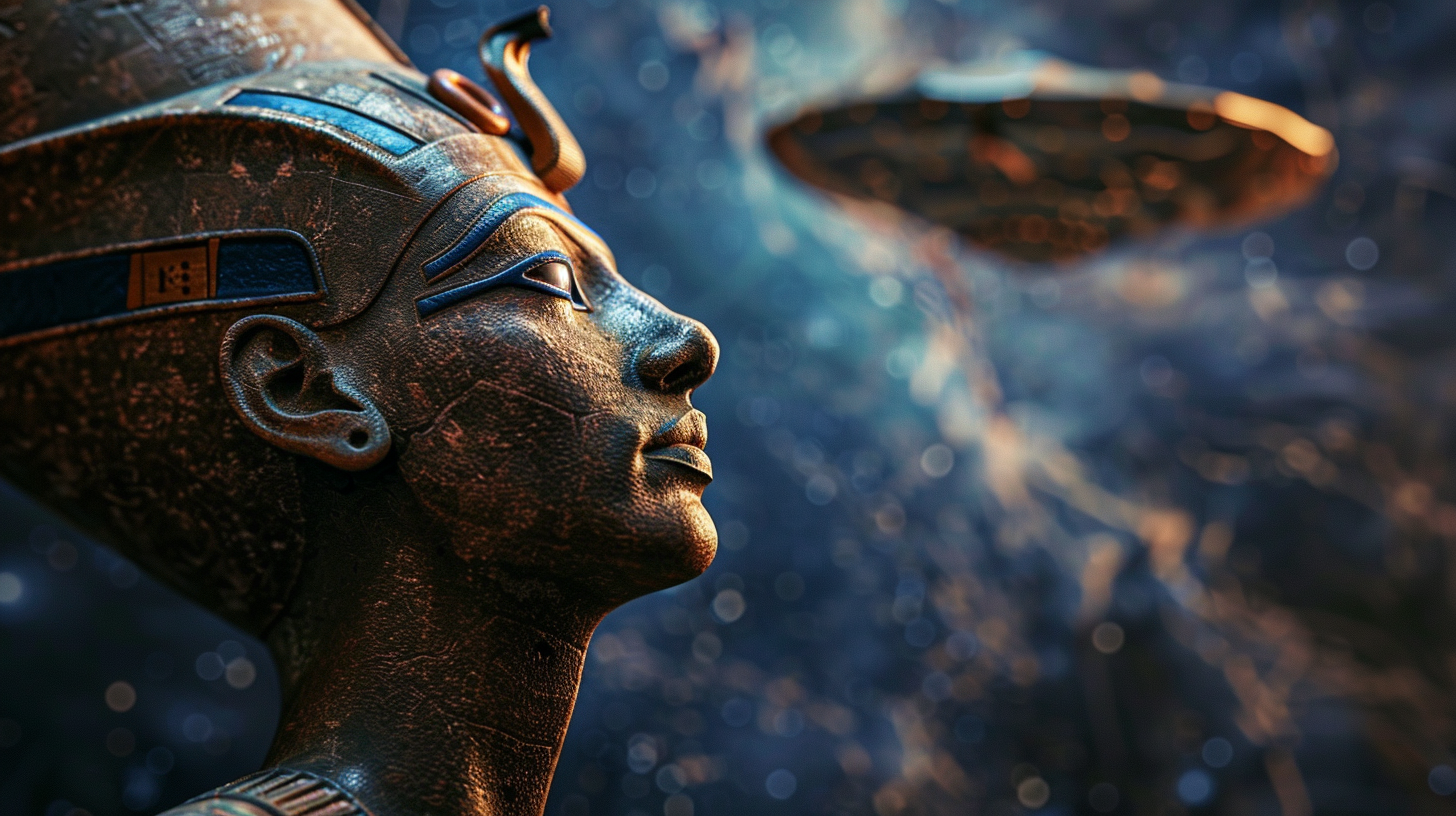Embark on a fascinating journey into the religious reforms of Pharaoh Akhenaten in ancient Egypt, which introduce us to the intriguing world of Atenism. This unique faith revolves around worshipping the sun disk Aten as the supreme deity, challenging traditional beliefs with unconventional practices. Akhenaten’s reign sparked debates on the symbolic representations of Aten and its potential extraterrestrial connections, inviting us to delve deep into the enigmatic realm of Atenism.
Pharaoh Akhenaten’s rule, lasting from around 1353 to 1336 BCE, signified a significant departure from established Egyptian religious traditions. His goal was to elevate Aten, previously a minor aspect of the sun god Ra, to the status of the sole deity while diminishing the importance of other gods. This radical shift towards monotheism was underscored by the establishment of a new capital city, Akhetaten (now Amarna), dedicated exclusively to the worship of Aten.
At the heart of Atenism lies the depiction of Aten as a luminous disk emitting rays, often portrayed with hands holding symbols of life, such as the ankh. Some interpretations of Aten’s representation have drawn comparisons to a UFO, sparking discussions on potential extraterrestrial influences on ancient Egyptian beliefs. However, it is vital to approach such theories with caution and explore diverse perspectives rooted in ancient Egyptian cosmology and symbolism.

One theory regarding the disk-like representation of Aten revolves around the symbolism of the sun and its life-sustaining properties. The ancient Egyptians revered the sun as a source of vitality, light, and fertility, attributing immense significance to its role in daily rituals. Thus, depicting Aten as a radiant disk may symbolize these essential attributes rather than serving as a literal representation of a spaceship.
Moreover, the hands extending from Aten’s rays, often grasping ankh symbols, could symbolize the sun’s nurturing role in sustaining life and ensuring continuity. The ankh symbol, resembling a handle, was associated with concepts of immortality, rebirth, and life in Egyptian beliefs. Therefore, illustrating the Aten with outstretched hands holding ankh symbols might convey the notion of the sun as a benevolent force bestowing vitality and sustenance upon the world.
Another interpretation of the disk-like depiction of Aten stems from Akhenaten’s personal religious beliefs and political agenda. Some scholars suggest that Akhenaten’s promotion of Atenism was driven by a desire to consolidate his authority and challenge the influential priesthood of Amun, key figures in traditional Egyptian religious structures. Thus, emphasizing the Aten as the singular deity may have been a strategic maneuver to centralize religious power under the pharaoh’s dominion.
In summary, while the portrayal of Aten resembling a spaceship may ignite conversations about extraterrestrial influences in ancient Egyptian spirituality, it is crucial to explore alternative explanations grounded in Egyptian cosmology, symbolism, and historical backdrop. Whether symbolizing the life-affirming aspects of the sun or reflecting Akhenaten’s religious and political strategies, the worship of Aten unveils a captivating chapter in the annals of ancient Egyptian civilization.
